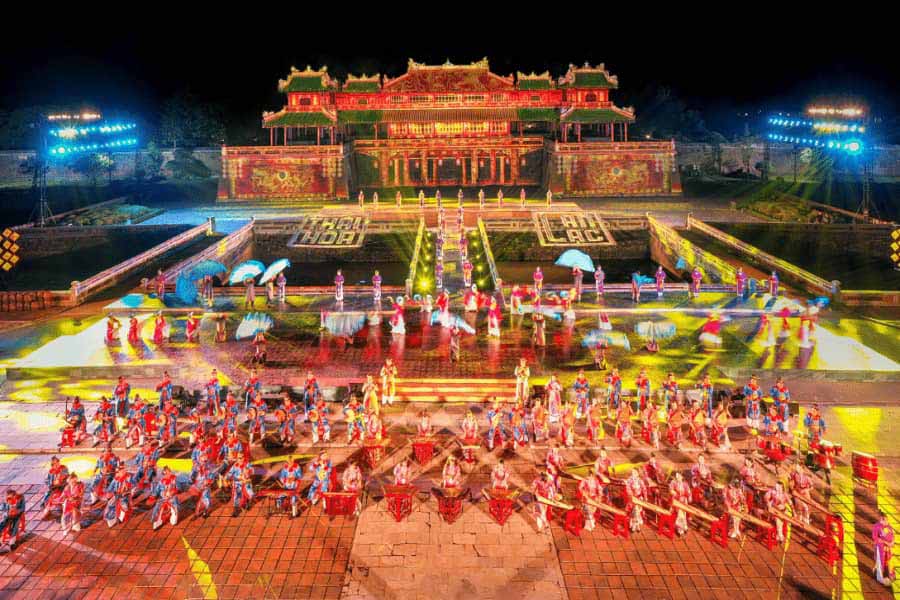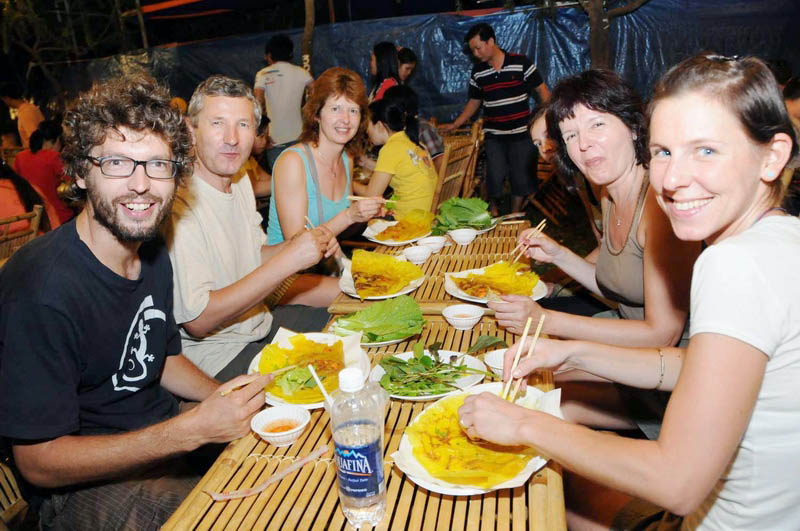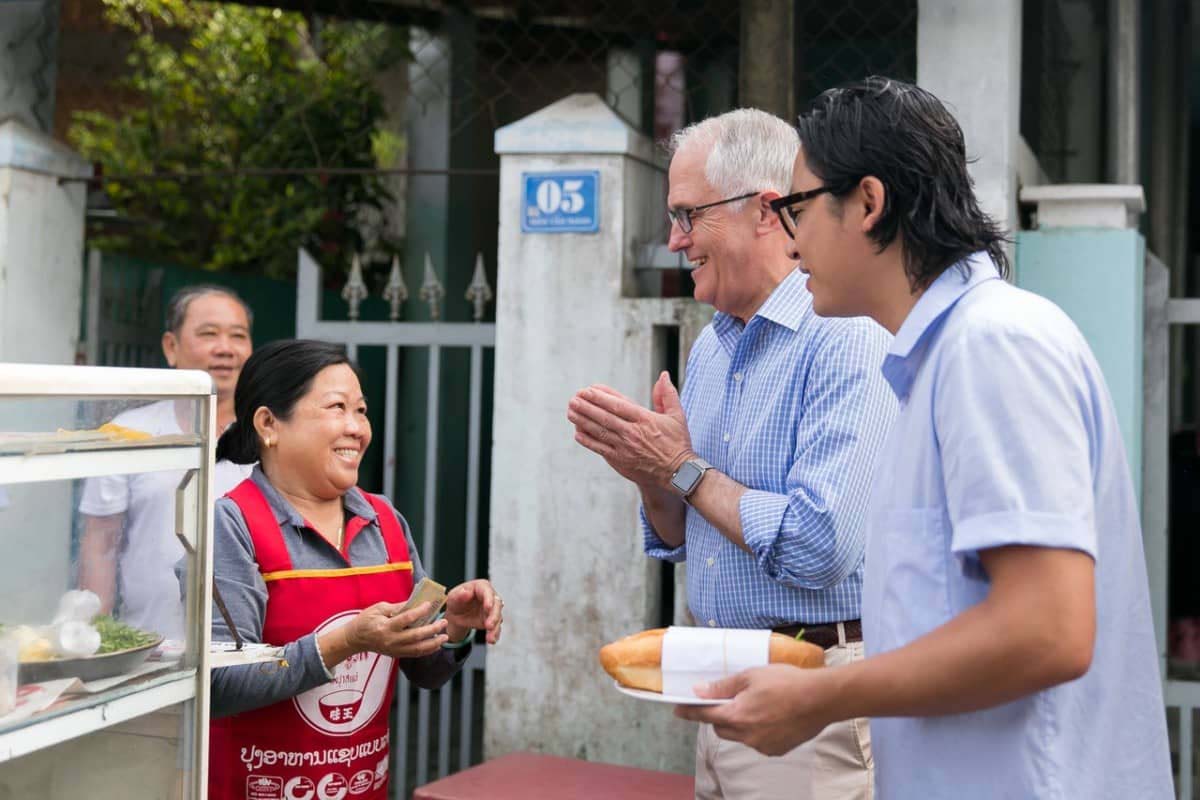General visiting information
Located in the heart of Hanoi, the complex consists of five courtyards, enclosed in high walls and gates. It served as Vietnam's first university, where scholars and students learned Confucianism, literature, and poetry. Today, it stands as a symbol of the country's intellectual and cultural heritage, admired by visitors from all over the world.
Opening hours and ticket fee
Temple of Literature Hanoi is open to the public every day of the week, except for Mondays. The operating hours are from 8:00 in the morning until 5:30 in the afternoon, and the final admission is at 5:00 pm. Each individual is required to pay an entrance fee of 30,000 Vietnamese dong, which is roughly equivalent to $1.50 USD.
At night, the temple becomes even more enchanting and magical, thanks to the night tour that showcases the beauty of the site with dazzling lights, traditional music, and 3D mapping technology. The night tour is a new and unique way to experience the history and culture of Vietnam, as well as to enjoy the nightlife of Hanoi. The night tour is open from 19:20 to 22:30 on Wednesdays, Saturdays and Sundays, with the 3D Mapping presentation available at 20:00, 21:00 and 22:00.
How to go to the Temple of Literature
The Temple of Literature Hanoi is located in Dong Da District, which is a central location in the city. You can easily reach it by taxi, bus, or motorbike. If you're staying in the Old Quarter, a taxi ride will cost around $2 to $3.5, or you can take a Grab ride for even less.
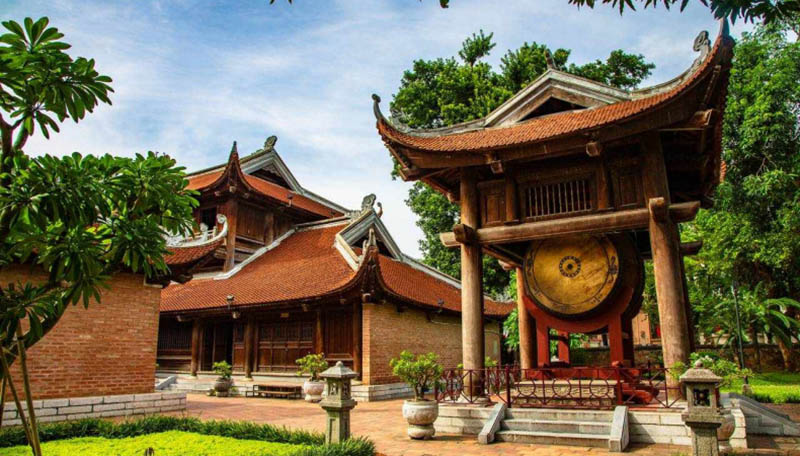
The Temple of Literature attracts visitors because of its historical beauty
Unraveling the History and Heritage of the Temple of Literature Hanoi
The Temple of Literature Hanoi is a unique and culturally rich attraction that is worth a visit by anyone interested in Vietnamese history and culture. The Temple is a complex of buildings and courtyards that includes a Confucian temple, a school, and a museum. It is located in the heart of Hanoi and is renowned for its stunning architecture, serene atmosphere, and historical significance.
Origins of the Temple and its historical significance
The construction of the Temple of Literature Hanoi took place in 1070, in the period when Emperor Ly Thanh Tong was in power. It was originally built to honor Confucius and his teachings, which were highly respected by Vietnamese scholars. After the temple's construction, it became the country's first university, known as the Imperial Academy.
The Imperial Academy was responsible for educating the royals, bureaucrats, and scholars in the art of governance, literature, poetry, and philosophy. It remained the country's premier learning institution until the early 19th century. During that time, the temple and its courtyards underwent several renovations, including the addition of stelae that commemorated the accomplishments of scholars who had studied there.
In 1842, the Imperial Academy was divided into two schools, one for Confucian studies and the other for literature, mathematics, and medicine, signaling a significant shift in the country's education system. Today, the Temple of Literature Hanoi stands as a testament to Confucianism and the importance of education in Vietnamese culture.
Connection to Confucianism and Education in Vietnam
Confucianism has played a fundamental role in Vietnam's culture and education system since ancient times. The ethical and moral teachings of Confucius, including loyalty, filial piety, and respect for elders, are deeply embedded in Vietnamese society. The temple itself is a manifestation of those values, as it was built to honor Confucius and the Confucian scholars who had studied there.
The temple's five courtyards represent the five Confucian virtues of humanity, justice, propriety, wisdom, and loyalty. The stelae garden, located in the third courtyard, features 82 stone tablets that honor the scholars who passed the highest level of examination during the Ly and Tran dynasties.
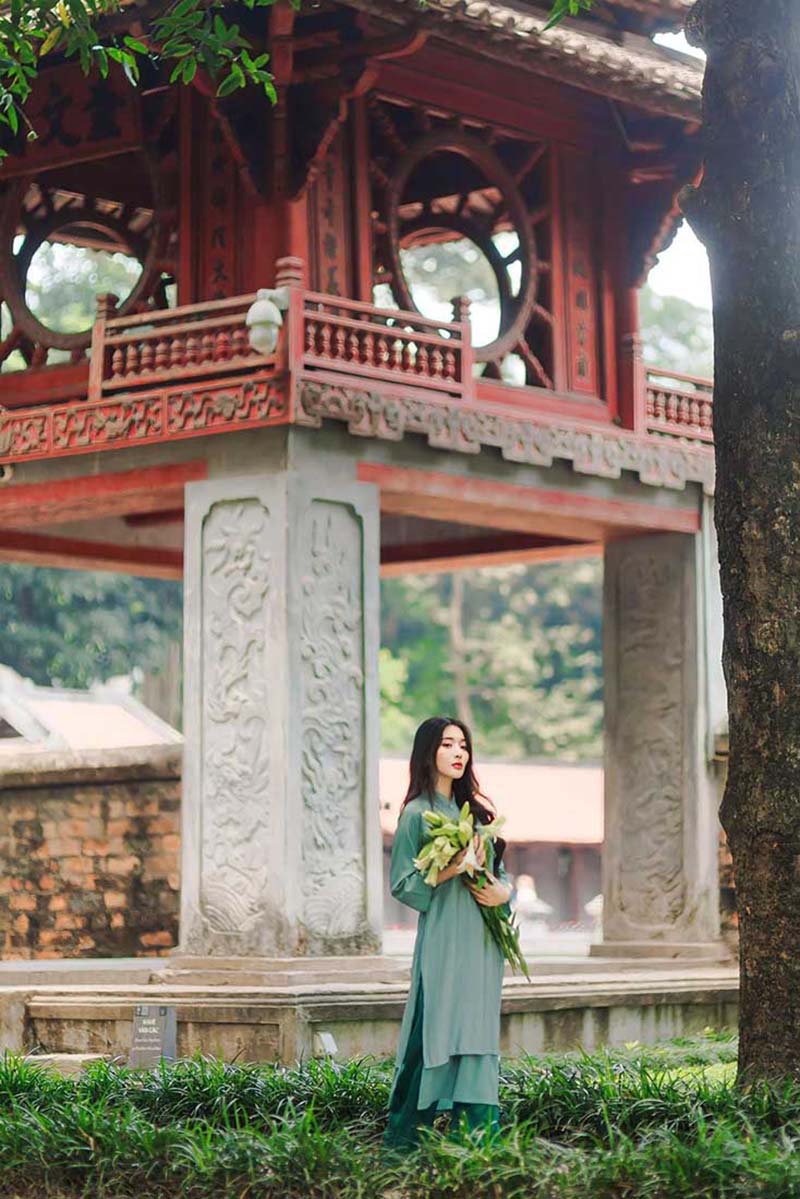
Stone tablets that honored the scholars who passed the highest level
Navigating the Temple Complex
The Temple of Literature Hanoi is vast, and it may take several hours to explore all its courtyards and pavilions. Here are some of the main attractions to look out for when visiting the Temple of Literature.
Van Chuong Lake
Van Chuong Lake is located at the entrance of the temple and features a statue of Confucius. This place brings a peaceful beauty behind the blocks and is a familiar destination for students and locals to stroll after long days.
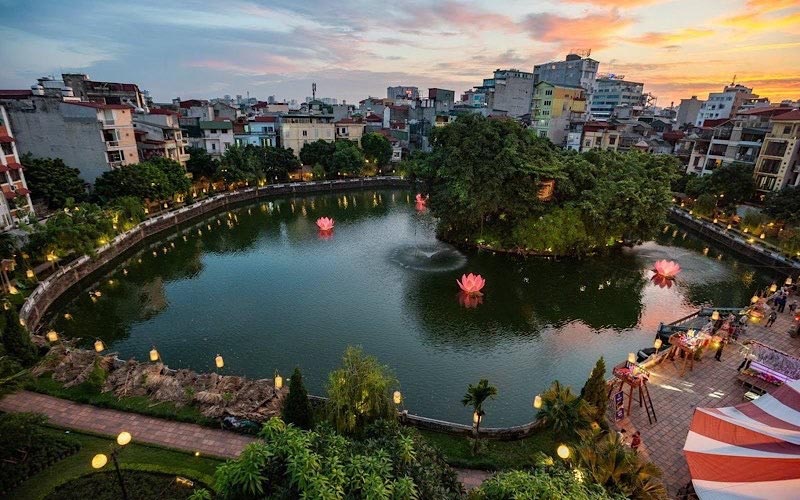
The peaceful beauty of Van Chuong Lake
Văn Miếu Môn - The Main Gate
Van Mieu Gate means the outer three-door gate, with a tall and two-storey middle gate. The lower floor is large, the upper floor is small, and there is a wide porch. Just like other architecture in the Temple of Literature, Văn Miếu Môn also exudes an ancient beauty, bearing witness to almost a thousand years of Hanoi history.
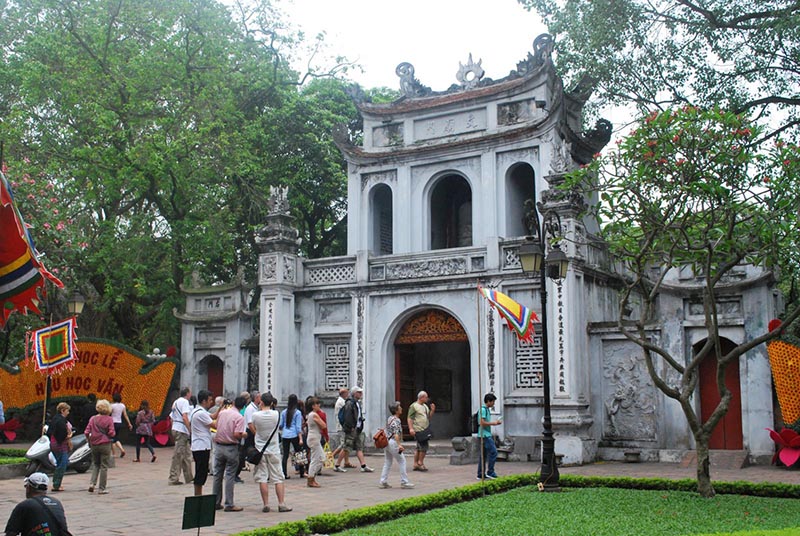
The ancient beauty of Văn Miếu Môn
Khuê Văn Các - The Pavilion of Constellation
Khuê Văn Các, although smaller than the other structures in the Temple of Literature, has beautiful architecture and is considered a symbol of Hanoi. In the past, this place was used for collecting and discussing excellent literary works of scholars.
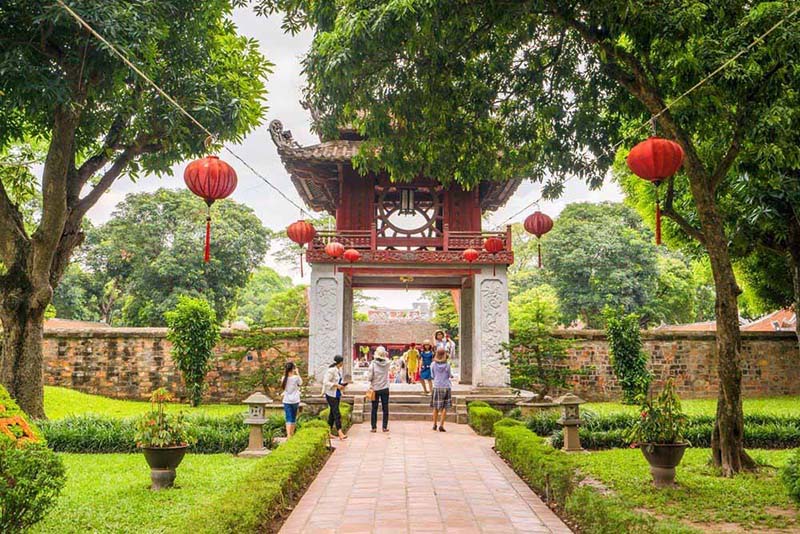
Khuê Văn Các has beautiful architecture and is considered a symbol of Hanoi
Đại Trung Môn - The Great Middle Gate
This is the entrance to the third courtyard, which houses the stelae garden. In this area, there are many trees planted to provide shade, with two small ponds creating an elegant space. The Dai Trung Mon architecture follows a 3-section style with tiled roofs, and has two rows of columns in the front and back, with a middle row of columns to support the roof.
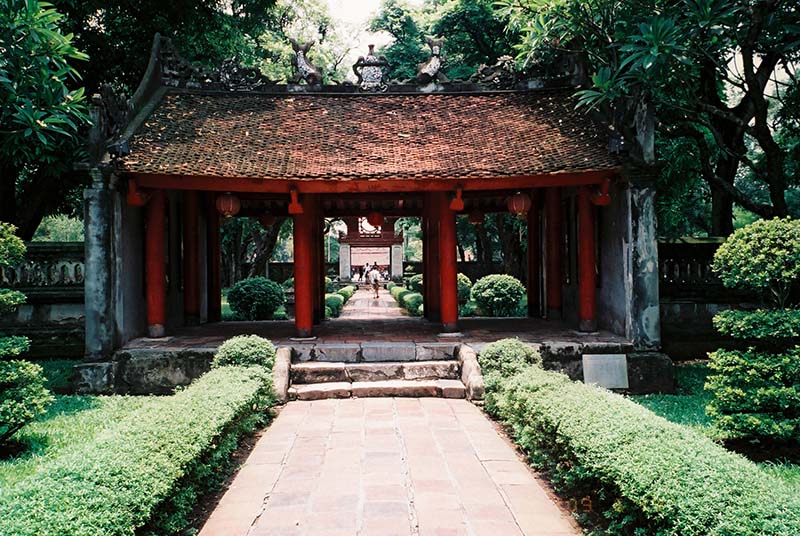
Đại Trung Môn has the beauty of history, surrounded by green gardens
Giếng Thiên Quang - The Well of Heavenly Clarity
In Vietnamese, Thiên Quang means the light of the sky. In ancient times, people used the metaphor of Thiên Quang to symbolize the essence of the universe, to illuminate knowledge, to improve moral qualities, and to beautify human society. Giếng Thiên Quang well is located in the third courtyard and is said to have clear water. It was used by scholars to wash their faces before taking exams.
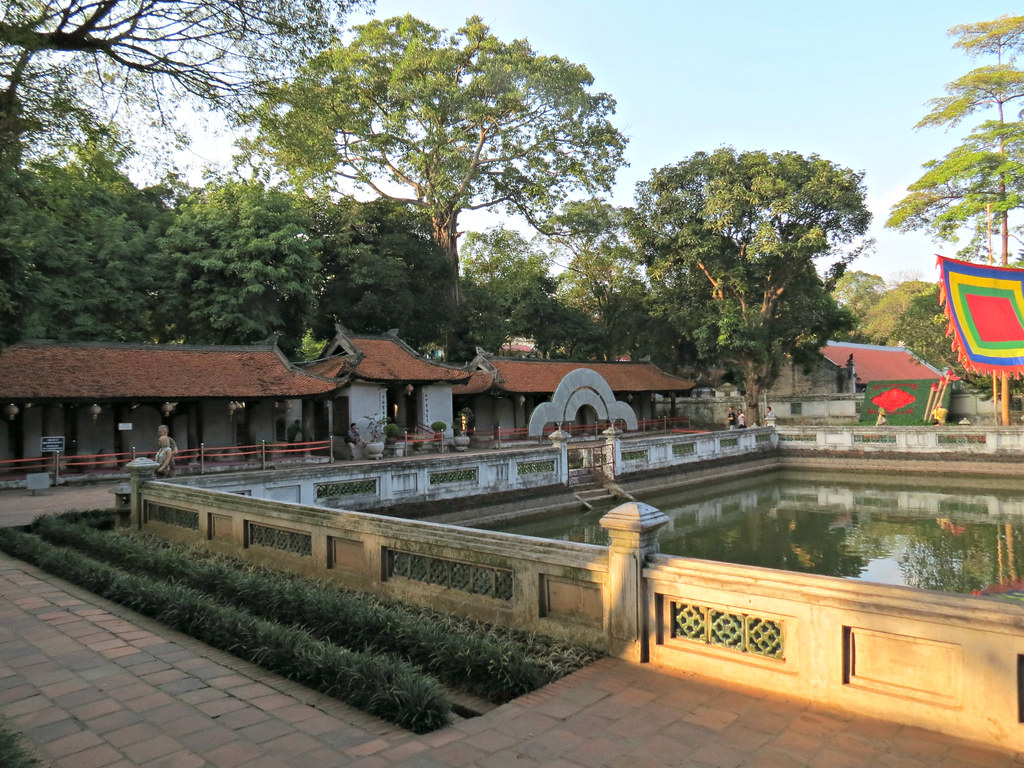
Water in Giếng Thiên Quang was used by scholars to wash their faces before taking exams
Vườn bia tiến sĩ - Stelae of Doctors Garden
This is one of the temple's most picturesque spots and features dozens of steles honoring the scholars who passed the highest level of examination. All of the steles are placed on the backs of stone turtles, consisting of 82 steles. Each Doctoral beer is a unique work of art, with intricate carvings on the forehead, edges, and feet. On March 9th, 2010, UNESCO recognized these 82 stone steles as a World Heritage material.
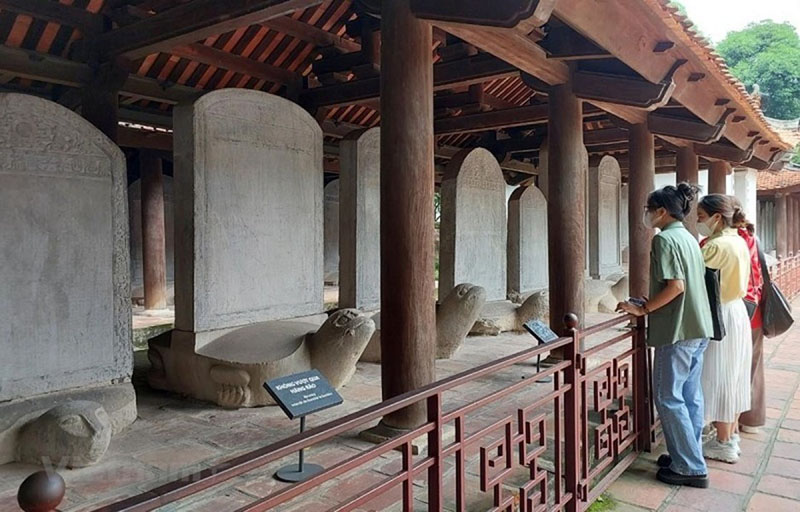
Stone steles which were recognized as a World Heritage material
Đại Thành Môn - Attained Talent Gate
This is the entrance to the fourth courtyard, which was initially used for administration and the library. Đại Thành Môn has a 3-room tiled roof architecture, with 2 front and rear porch columns, and 1 row of pillars in the middle to support the roof and install a 2-door gate. Through the Đại Thành Môn is a spacious courtyard, paved with red brown Bát Tràng square bricks.
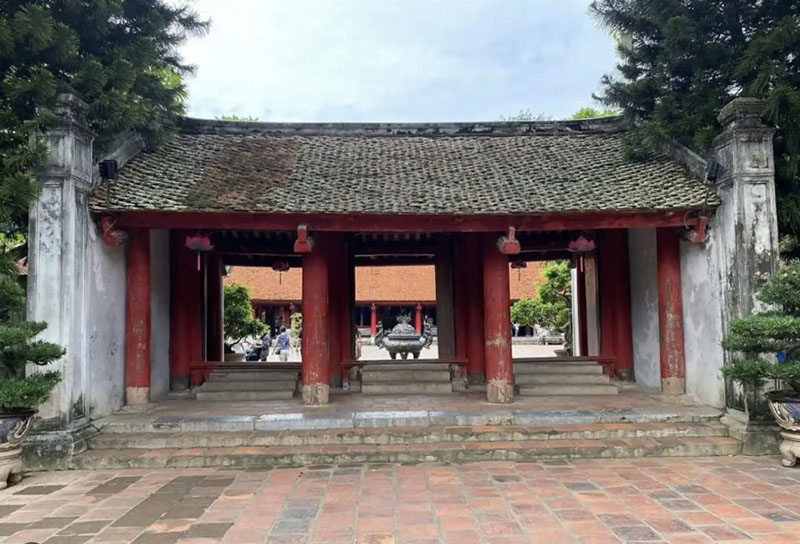
Đại Thành Môn was initially used for administration and the library
Đại Bái Đường - The Grounds of Imperial Academy
This is the temple's final courtyard and was used for graduation ceremonies and other important events. Đại Bái Đường was built with simple and unadorned lines inside and wooden columns stacked in a criss-crossing pattern. The curved roof on both sides and the roofing tiles in the shape of dragon scales give it a solemn and ancient atmosphere in the space for worship.
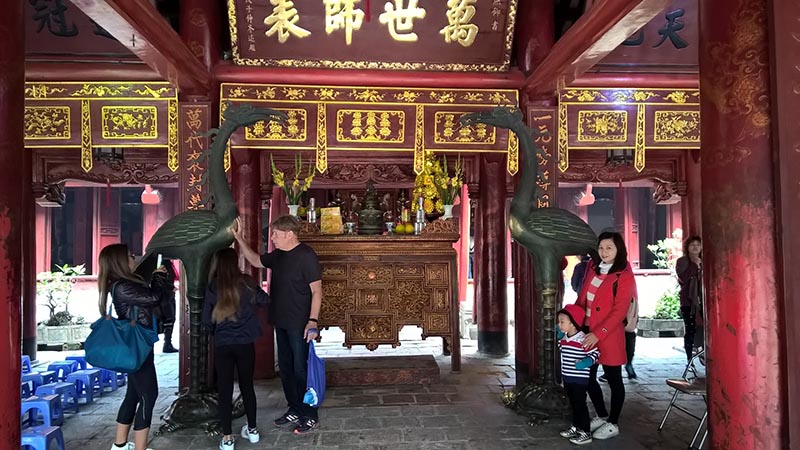
A solemn and ancient atmosphere in Đại Bái Đường
To gain more insights, navigate to our post about Vietnam travel guide!
Insider Tips for a Meaningful Visit to the Temple of Literature
To fully enjoy your visit to the Temple of Literature Hanoi, which is a popular tourist spot in the city and can be crowded during peak hours, here are some suggestions.
-
Plan your trip early in the day when there are fewer visitors.
-
Wear comfortable shoes as you will be walking a lot.
-
Show respect for the temple's customs and traditions by not touching or climbing on any of the monuments.
-
Take precautions against the heat by bringing a hat, sunscreen, and a water bottle.
-
If you want to learn more about the history and cultural importance of the temple, consider using an audio or a personal guide.
In conclusion, the Temple of Literature Hanoi is a fascinating destination that offers insight into Vietnam's rich cultural and educational heritage. With its beautiful architecture, serene courtyards, and historical significance, it's a must-see attraction for anyone who visits Hanoi. And if your are searching for best vacation in Vietnam, please contact us for more details.



